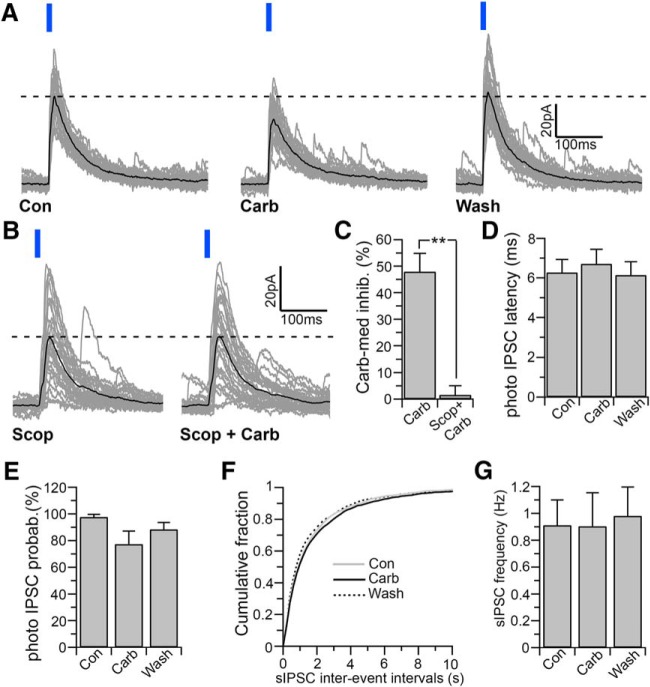Figure 3.
Carbachol inhibits LH/PFVgat → Orx input. A, B, Carbachol (15 μm) reduces the amplitude of the photo-evoked IPSCs, and this effect is blocked by the muscarinic receptor antagonist, scopolamine (10 μm; B). Gray represents 30 photo-evoked IPSCs. Black represents average photo-evoked IPSCs. C, Summary graph comparing the carbachol-mediated inhibition in control ACSF (Carb; n = 10) and in the presence of scopolamine (Scop + Carb; n = 5). **p < 0.01 (unpaired t test). D, E, Carbachol has no significant effect on the photo-evoked IPSC latency (D; n = 10; one-way ANOVA, F = 0.182, p = 0.834) or photo-evoked IPSC probability (E; n = 10; one-way ANOVA, F = 2.453, p = 0.105). F, G, In the same neurons in which carbachol inhibits the LH/PFVgat → Orx input, carbachol has no effect on the sIPSC frequency. Cumulative distribution plots of sIPSC interevent intervals compiled from 10 orexin neurons (F; 200 ms bins; two-way ANOVA, F = 0.79, p = 0.99). Mean values of sIPSC frequency (G; n = 10; one-way ANOVA, F = 0.038, p = 0.963). Photo-evoked IPSCs were evoked by 10 ms light pulses and were recorded at Vh = 0 mV using the Cs-methane-sulfonate-based pipette solution.

